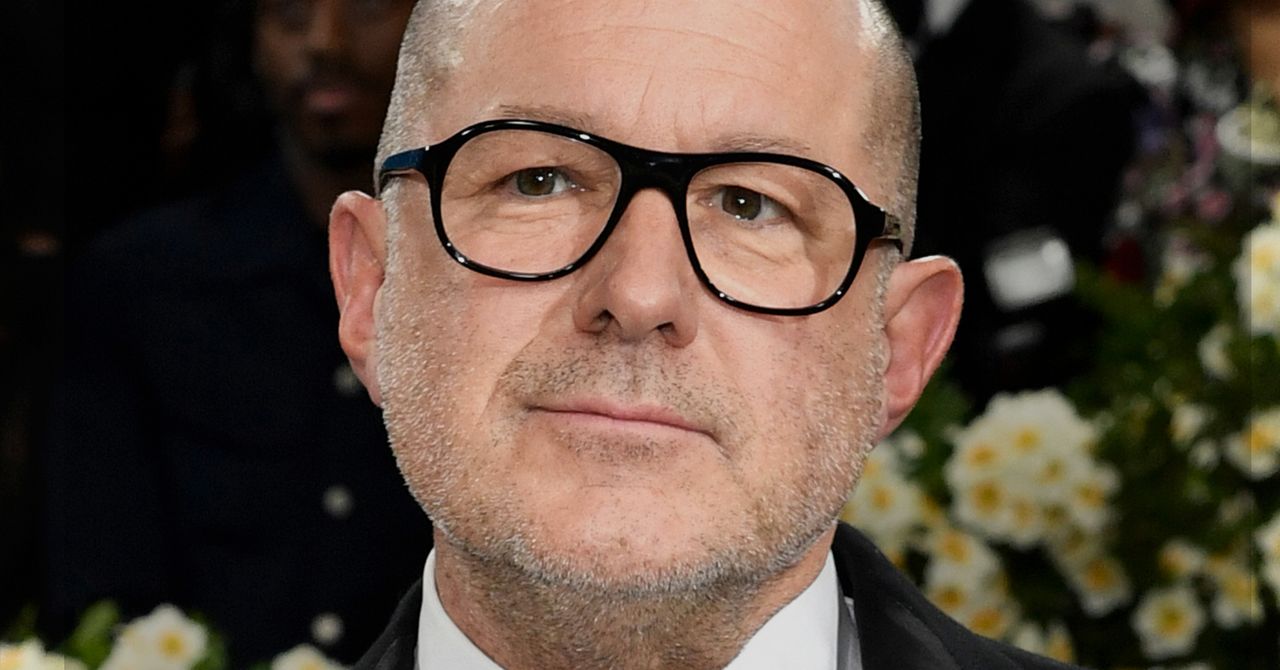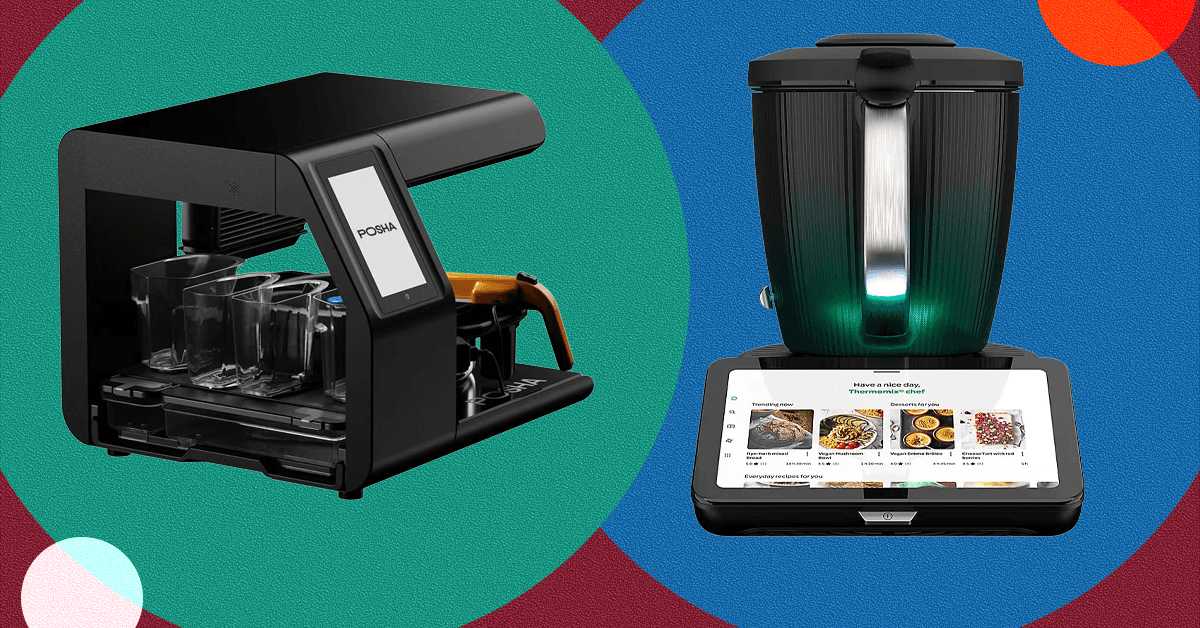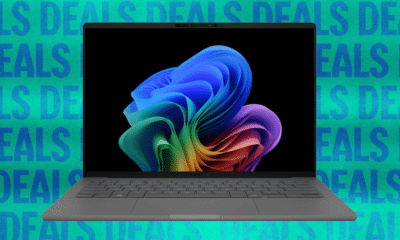Tech
Jony Ive Says He Wants His OpenAI Devices to ‘Make Us Happy’

At OpenAI’s developer conference in San Francisco on Monday, CEO Sam Altman and ex-Apple designer Jony Ive spoke in vague terms about the “family of devices” the pair are currently working to develop.
“As great as phones and computers are, there’s something new to do,” Altman said on stage with Ive. The duo confirmed that OpenAI is working on more than one hardware product but finer details, ranging from use cases to specifications, remain under wraps.
“Hardware is hard. Figuring out new computing form factors is hard,” said Altman in a media briefing earlier in the day. “I think we have a chance to do something amazing, but it will take a while.”
Ive said that his team has generated “15 to 20 really compelling product” ideas on the journey to find the right kind of hardware to focus the company’s efforts on.
“I don’t think we have an easy relationship with our technology at the moment,” said Ive. “Rather than seeing AI as an extension of those challenges, I see it very differently.” Ive explained that one reason he wanted to design an AI-powered device with OpenAI is to transform the relationship people currently have to the devices they use every day.
While Ive acknowledged the potential for AI to boost productivity, efficiency doesn’t appear to be his core goal with these devices. Rather, he hopes for them to bring more social good into the world. The devices should “make us happy, and fulfilled, and more peaceful, and less anxious, and less disconnected,” he said.
Earlier reporting indicated that OpenAI is planning to manufacture a new category of hardware that doesn’t resemble a phone or laptop. In a recent preview for OpenAI staff, Altman hinted that the product would be aware of a user’s surroundings and day-to-day experiences, according to The Wall Street Journal. The device might be screenless and rely on inputs from cameras and microphones.
OpenAI also hasn’t said publicly when it plans to launch the devices, though late 2026 may reportedly be the target launch, according to the Financial Times. The publication recently reported that development of the device has been stymied by technical issues.
Tech
Two Kitchen Robots Turned Me Into Their Prep Cook for Thanksgiving

The holiday is still almost a week away, and I’m sick of Thanksgiving. I’ve already made four rounds of mashed potatoes, three of mac and cheese, and three turkeys (with more still waiting in my fridge) as part of testing smart probes to help smoke turkeys outside and preparing seven-course holiday meal kits for friends and family.
I was eager to finally outsource some of the cooking by testing two very different robo-chef devices, the Thermomix TM7 and the Posha kitchen robot. Both promise to plan my meals and also do most of the cooking, which sounds pretty good to me.
The Thermomix descends from a German device launched in 1968—a time when the best-known robot chef was cartoon Rosie on The Jetsons—that was essentially a blender with a heater. It’s since caught on big in countries from Italy to Portugal to Australia, and over the years it’s added multi-tier steaming, baking, proofing, a touchscreen, an encyclopedic recipe app, and a whole lot of smart features. WIRED reviewer Joe Ray called 2020’s last-generation Thermomix TM6 (9/10, WIRED Recommends) the “smartest of the smart kitchen.” The newest version, the seventh-generation TM7, was released in August and looks like a giant trophy with a computer screen. It retails for $1,699 and its goal is to replace almost every appliance in your kitchen. It’ll even happily order groceries for you on InstaCart.
The newest robo-chef entrant is Posha, a Silicon Valley-via-Bangalore startup device that aims at truly autonomous one-pot cooking, once you’ve chopped up the proper ingredients into little bins. The Posha kitchen robot was released in January at a price of $1,750 and promptly sold out, as has each successive batch. The device comes complete with a robot stirring arm, and a camera to monitor moisture and browning. Press a button, and Posha will add ingredients at the appropriate moment, spice and stir your food, add water and oil, and cook it down, all without your participation.
I used both the Posha and Thermomix to make a spread of Thanksgiving sides: candied yams, mashed potatoes, mac and cheese, brussels sprouts, and a more complex wild card entry chosen because I thought my Aunt Katherine might like it—and assessed cooking experience overall. Consider it a robo-chef face-off.
Here is my experience with each of the Thermomix and the Posha—and how each fared on five Thanksgiving side recipes.
Cooking Experience With Thermomix
The Thermomix has almost 60 years of history. This is a good thing. It began as, essentially, a blender that can cook. It is still a very powerful blender that can cook. Lord, it makes pesto or mashed potatoes as quickly and easily as anything. I stood by in actual awe of its raw cooking-blending power.
But it’s also evolved into a whole lot more, an all-in-one device that purports to replace just about every appliance in your kitchen. Today’s Thermomix has become a beast of multifarious functionality.
Tech
Meta announces completion of core 2Africa cable | Computer Weekly

Meta has announced the completion of core 2Africa infrastructure, the world’s longest open access subsea cable system.
At 45,000km and first launched in May 2022, 2Africa is one of the world’s largest subsea cable projects. It was built through a consortium comprising global partners led by Meta, with the likes of Bayobab, Center3, CMI, Orange, Telecom Egypt, Vodafone Group and WIOCC. Meta regards 2Africa as a landmark subsea cable system that sets a new standard for global connectivity at unprecedented scale.
The consortium said its shared goal was to develop an open, inclusive network that fosters competition, supports innovation and unlocks new opportunities for millions. Moreover, having an open-access model is intended to ensure that multiple service providers can leverage the infrastructure, accelerating digital transformation and artificial intelligence (AI) adoption across the region.
Recent partners including Bharti Airtel and MainOne (an Equinix Company) collaborated on datacentre integration, further expanding the cable’s impact and reach.
The deployment spanned 50 jurisdictions and nearly six years of work, relying on the active engagement of regulators and policymakers to navigate requirements and keep progress on track.
The network is the first cable to connect East and West Africa in a continuous system and link Africa to the Middle East, South Asia and Europe. With a current reach of 33 countries and still counting, the network is designed to enable connectivity for three billion people across Africa, Europe and Asia – more than 30% of the world’s population.
With a design capacity of up to 180Tbps on key parts of the system, and in addition to supplementing capacity demand in the Middle East, it is also designed to underpin the further growth of 4G, 5G and fixed broadband access, interconnecting Europe, eastward via Egypt, the Middle East via Saudi Arabia, and make 21 landings in 16 countries in Africa.
2Africa is attributed with delivering a step change in international bandwidth for Africa, with technical capacity that far exceeds previous systems. On the West segment, stretching from England to South Africa, and landing in countries such as Senegal, Ghana, Cote d’Ivoire, Nigeria, Gabon, the Republic of Congo, DRC and Angola, the cable supports 21 terabits per second (Tbps) per fibre pair, with eight fibre pairs on the trunk.
To gain the required throughput, the cable deployed advanced spatial division multiplexing (SDM) technology, supporting up to 16 fibre pairs per cable. This, says Meta, was double the capacity of older systems and represented the first 16-fibre-pair subsea cable to fully connect Africa. The link incorporated undersea optical wavelength switching, enabling flexible bandwidth management and supporting evolving demands for AI, cloud and high-bandwidth applications.
The cable system also features two independent trunk powering architectures across its West, East, and Mediterranean segments, in order to optimise capacity and providing additional resiliency against electrical faults. Meta added that its Our branching unit switching capability allowed it to optimise for trunk capacity and reliability by utilising routes much further offshore from hazards such as the Congo Canyon turbidity currents, while serving branches to West African nations.
To further ensure the integrity and reach of the cable, the consortium engineered compatible crossing solutions for over 60 oil and gas pipelines.
Observing the potential effect the cable could have, Meta expects that 2Africa could contribute up to $36.9bn to Africa’s GDP within just the first two to three years of operation. It was confident its arrival will boost job creation, entrepreneurship and innovation hubs in connected regions, and said evidence from previous cable landings have shown that fast internet access increases employment rates, improves productivity and supports shifts towards higher-skill occupations.
Tech
First fibre laid under Project Reach UK digital backbone | Computer Weekly

Neos Networks has revealed the successful completion of the first fibre installation under the Project Reach programme.
Specifically designed to end the worst signal blackspots on the major rail arteries of Britain and no less than rewire the UK for the next decade of digital growth, Project Reach’s nationwide roll-out will see at least 1,000km of high-grade fibre laid alongside Britain’s railways. By using the rail network as a national corridor for new fibre, Neos says it’s taking advantage of the most direct, secure and future-proof routes available.
The infrastructure will support everything from rail operations and transport digitisation to the surging demand created by artificial intelligence (AI), cloud and datacentre expansion. It’s the kind of investment that will determine how competitively Britain can perform in an increasingly data-driven world.
Structurally, the project brings together public and private sector investment and infrastructure, and is claimed to be able to save taxpayers around £300m while delivering substantial benefits to rail users.
The scheme also aims to create a high-performing digital connectivity backbone for businesses, providing connectivity to datacentres and high-performance edge facilities, supporting the UK’s digital ambitions and driving innovation.
Network Rail is the owner and infrastructure manager of most of the railway network in Britain, and teaming with the business-dedicated network firm and connectivity infrastructure-as-a-service provider is designed to deliver the biggest upgrade to Britain’s rail telecoms infrastructure in decades.
The railway’s current fibre optic cable system uses 24- and 48-count cable similar to that found in the ground on residential streets. The network will see use of a Neos Networks 432-core high-count cable, hugely increasing the network’s capability. Network Rail will use one half of the new capacity and Neos will commercialise the other.
In partnership with AmcoGiffen and Network Rail, Neos has started to install 432-count fibre cables along the Great Western Main Line, connecting London to Cardiff.
For this first phase of fibre deployment, more than 40 specialists worked through overnight windows under tight safety and operational controls to ensure zero disruption to passenger services. Through planning, coordination and collaboration with Network Rail, the fibre pull was completed to time and to the required high safety standards, setting a benchmark for the roll-out programme and demonstrating the efficiency of the delivery model.
“The milestone is about more than a successful fibre pull, it’s about building the backbone for Britain’s digital future,” said Neos Networks CEO Lee Myall. “AI, cloud and datacentres may capture headlines, but they all rely on one thing: fibre. Without it, the UK’s digital ambitions simply can’t be realised. Project Reach is how we make sure the UK stays globally competitive for decades to come.”
“Safe and efficient delivery in rail operations demands real expertise and precision, and our team has set the benchmark for both as we leverage our experience on Project Reach,” added AmcoGiffen managing director John Booth. “The success of this first phase reflects the strength of our collaboration with Neos Networks and Network Rail, and the skill and commitment of everyone involved.”
Harriet Hepburn, corporate finance, partnerships and retail director at Network Rail, said: “This first milestone highlights how collaboration between the public and private sectors can deliver tangible national benefits. Project Reach is modernising Britain’s rail communications while laying the foundation for the next phase of digital growth in the UK.”
-

 Tech6 days ago
Tech6 days agoNew carbon capture method uses water and pressure to remove CO₂ from emissions at half current costs
-

 Politics1 week ago
Politics1 week agoBritish-Pakistani honoured for transforming UK halal meat industry
-

 Business6 days ago
Business6 days agoThese 9 Common Money Mistakes Are Eating Your Income
-

 Sports6 days ago
Sports6 days agoTexas A&M officer scolds South Carolina wide receiver after touchdown; department speaks out
-

 Business7 days ago
Business7 days agoWhat’s behind Rachel Reeves’s hokey cokey on income tax rises?
-

 Tech1 week ago
Tech1 week ago$25 Off Exclusive Blue Apron Coupon for November 2025
-

 Sports7 days ago
Sports7 days agoApple scrapping MLS Season Pass service in ’26
-

 Fashion1 week ago
Fashion1 week agoAfter London, Leeds and Newcastle, next stop Glasgow for busy Omnes





















